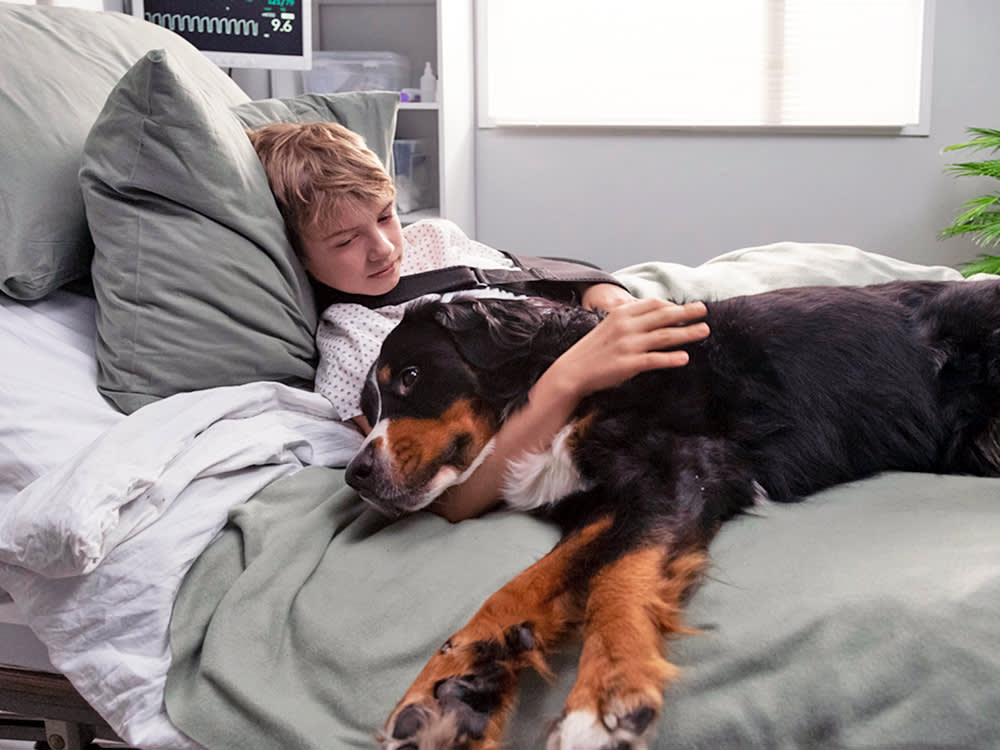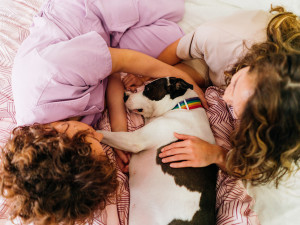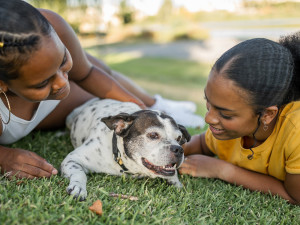Dogs Reduce Stress in Children Receiving Emergency Medical Care, New Study Finds
Patients reported significantly lower anxiety after spending time with a pup.

Share Article
No one wants to end up in an emergency room. They’re chaotic, stressful places — and needless to say, the reason for visiting one is probably anxiety-inducing, too. For kids, they can be even scarier; studies have foundopens in a new tab that separation from parents, interactions with strangers, and the unfamiliarity of hospital settings all add to a child’s fear. But new research may help provide relief. A studyopens in a new tab published in JAMA Network Open found that the presence of therapy dogs helps reduce anxiety in children receiving emergency care.
The study was conducted in a Riley Children’s Hospital in Indianapolis, Indiana, and included 80 participants. Each participant was between the ages of 5 and 17 and receiving emergency medical care. They were identified as having high anxiety levels upon arrival; researchers measured anxiety with the FACES scale, a self-report method used to numerically quantify stress in children from 0 to 10 points. They also analyzed cortisol levels in their saliva.

Get (totally free) deals for food, treats, accessories, tech, and way more pet parenting must-haves.
opens in a new tabEach of the children were given standard child-life therapy, which aims to minimize stress and improve the mental wellbeing of children in the medical system. Half of the children were also given ten minute sessions with a therapy dog. The stress levels of all participants were measured 45 minutes after exposure to the dog or the start of standard child-life therapy, and again as close to discharge from the hospital as possible.
Forty-five minutes after interacting with a therapy dog, the patients’ anxiety decreased by an average of 2.7 points on the FACES scale. In the group that didn’t interact with a dog, anxiety decreased by an average of only 1.5 points. Cortisol levels were similar in both groups, but, interestingly, patients who interacted with dogs needed less medication — 35 percent of kids in the control group received a dose of ketamine, midazolam, lorazepam, or droperidol, and only 18 percent of those with a therapy dog did.
The findings are promising, as any kid entering a hospital setting could benefit from calming and non-judgmental support. Researchers point out that 4.6 percent of children are physically or chemically restrained while in the hospital, and those numbers are much higher for children with psychiatric conditions. Twelve patients in the study were diagnosed with psychiatric conditions, and they were also greatly comforted by the presence of a dog.
“Our data provide initial evidence that the handler and therapy dog adjunct can further augment the goal of minimizing pain and anxiety without the use of chemical or physical restraint,” Heather P. Kelker, the study’s lead author, wrote. It pretty much confirms what most of us, adults and kids alike, already knew: Dogs just make everything better.

Sio Hornbuckle
Sio Hornbuckle is a writer living in New York City with their cat, Toni Collette.
Related articles
![]() opens in a new tab
opens in a new tab5 Places Where Therapy Dogs Do Their Best Work
At airports, hospitals, schools, and more, therapy dogs make things better.
- opens in a new tab
Does Your Dog Have Therapy Dog Potential?
Renowned animal behaviorist Patricia McConnell, PhD, on what it takes to be a great therapy dog.
![Golden Retriever service dog sitting in the front seat of a car.]() opens in a new tab
opens in a new tabI Shadowed My Family’s Therapy Dog at Work—Here’s a Peek Into Our Day
Meet Lucy, a pup who’s trained to bring joy to all who meet her.
![Two Black women with curly hair laying on the grass with their senior dog laying between them]() opens in a new tab
opens in a new tabTherapy Dogs Can Help You With Your ADHD
Happy news: Pups can help support your (or your kid’s) everyday needs.
![Suni Lee with Beacon, the USA Gymnastics' therapy dog]() opens in a new tab
opens in a new tabMeet Beacon, the Therapy Dog Who Helped Gymnasts De-Stress at the Olympic Trials
The pup is a credentialed staff member of USA Gymnastics.




